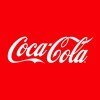Filter interviews by
Vishnu Barium Interview Questions and Answers
Vishnu Barium Interview Experiences
3 interviews found
I applied via Naukri.com and was interviewed in Nov 2024. There were 2 interview rounds.
(1 Question)
- Q1. Resume shortlisted
(1 Question)
- Q1. Killan, SRU, dryer, reactors,
(1 Question)
- Q1. Dryer, filters system, evaporator
I applied via Naukri.com and was interviewed before Feb 2023. There was 1 interview round.
(1 Question)
- Q1. Mass transfer, cooling tower calculation, drying system
Top trending discussions






Interview questions from similar companies

Associate Interview Questions & Answers
CTS Consulting & Technical Supportposted on 29 Jun 2015
Interview Preparation Tips
Experience: A 45 mins round which consisted of 30 mins of core questions and 15 mins of data structures. It was a mix of test on our knowledge .
Round: HR Interview
Experience: Most of the questions were based on general knowledge and many of them were from the resume provides by me
General Tips: It is always advisable to be prepared with certain set of general questions which make it easier to answer.
Skill Tips: Focus on your Study.. Revise the subject that you have studied at the time of Interview
Skills: Technical Skills
College Name: IIT MADRAS

Associate Interview Questions & Answers
CTS Consulting & Technical Supportposted on 29 Jun 2015
Interview Preparation Tips
Experience: Questions were on Aptitude, English, Probability, Permutations andCombinations and Programming (C, C++). NO Group Discussion was held.Candidates were shortlisted on the basis of their test scores.
Round: Technical Interview
Experience: Total time of this round was 45 minutes.First 30 minutes, questions on core programming were asked and in the remaining 15 minutes questions were asked on data structures.
Round: HR Interview
Experience: This was a 5 minute round where questions were put up, some based on the resume and other were general questions.
Skills: Knowledge in MATLAB.
College Name: IIT MADRAS

Associate Interview Questions & Answers
CTS Consulting & Technical Supportposted on 6 Aug 2021
Interview Questionnaire
2 Questions
- Q1. Write Query
- Ans.
Write a query
Specify the database and table name
List the columns to be selected
Add any conditions or filters
Specify the order of results
- Q2. Update query
Skills evaluated in this interview

I applied via Naukri.com and was interviewed in Nov 2021. There was 1 interview round.
Interview Questionnaire
2 Questions
- Q1. About previous companies.
- Q2. About my self
Interview Preparation Tips
Positive attitude.

Software Engineer Interview Questions & Answers
CTS Consulting & Technical Supportposted on 1 Apr 2021
Interview Questionnaire
1 Question
- Q1. Conceps

Business Analyst Interview Questions & Answers
CTS Consulting & Technical Supportposted on 14 Sep 2021
Interview Questionnaire
2 Questions
- Q1. What is your ambition
- Ans.
My ambition is to leverage data-driven insights to drive strategic decisions and enhance business performance.
I aim to become a key player in transforming data into actionable insights, similar to how I improved reporting processes in my previous role.
I aspire to lead cross-functional teams to implement data solutions that optimize operations, like streamlining workflows in past projects.
I want to continuously develop ...
- Q2. To be positioned
Interview Preparation Tips

Associate Interview Questions & Answers
CTS Consulting & Technical Supportposted on 16 Nov 2021
I applied via Campus Placement and was interviewed before Nov 2020. There were 3 interview rounds.
Interview Questionnaire
1 Question
- Q1. In resume about our stream of study
Interview Preparation Tips
Vishnu Barium Interview FAQs
Tell us how to improve this page.
Interview Questions for Popular Designations
Overall Interview Experience Rating
based on 3 interview experiences
Difficulty level
Duration
Interview Questions from Similar Companies
Vishnu Barium Reviews and Ratings
based on 24 reviews
Rating in categories
|
Junior Engineer
7
salaries
| ₹2.5 L/yr - ₹4 L/yr |
|
Process Engineer
3
salaries
| ₹5.2 L/yr - ₹7.1 L/yr |
|
Senior Manager
3
salaries
| ₹11.2 L/yr - ₹11.5 L/yr |
|
Junior Engineer Production
3
salaries
| ₹2.4 L/yr - ₹3.7 L/yr |
|
Chemical Engineer
3
salaries
| ₹2.5 L/yr - ₹3 L/yr |

Coca-Cola Company

Dhoot Transmission

Genius Consultants

Apotex Research
- Home >
- Interviews >
- Vishnu Barium Interview Questions












